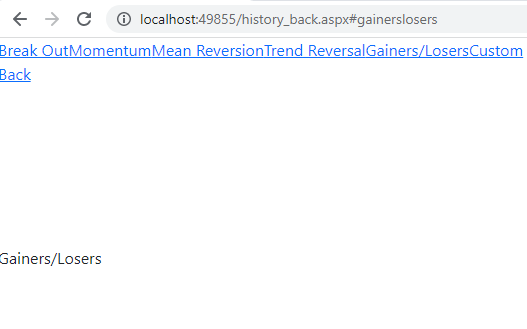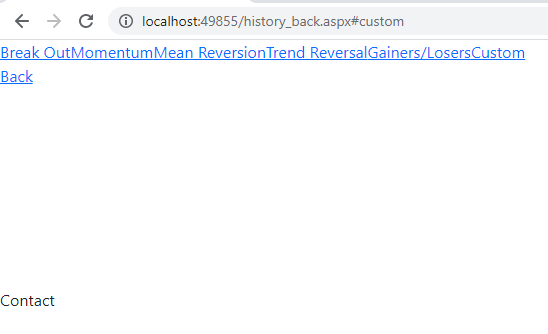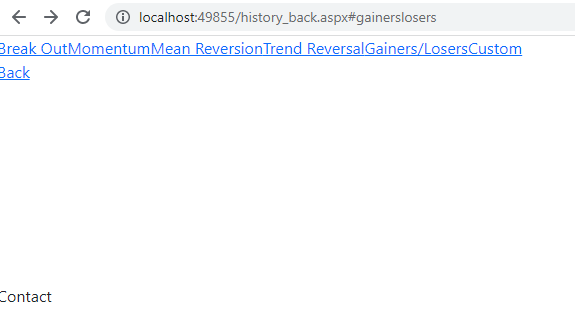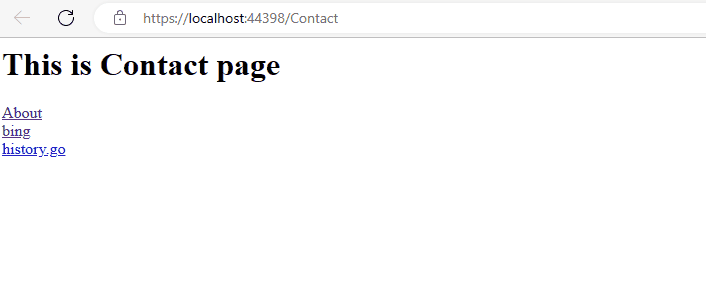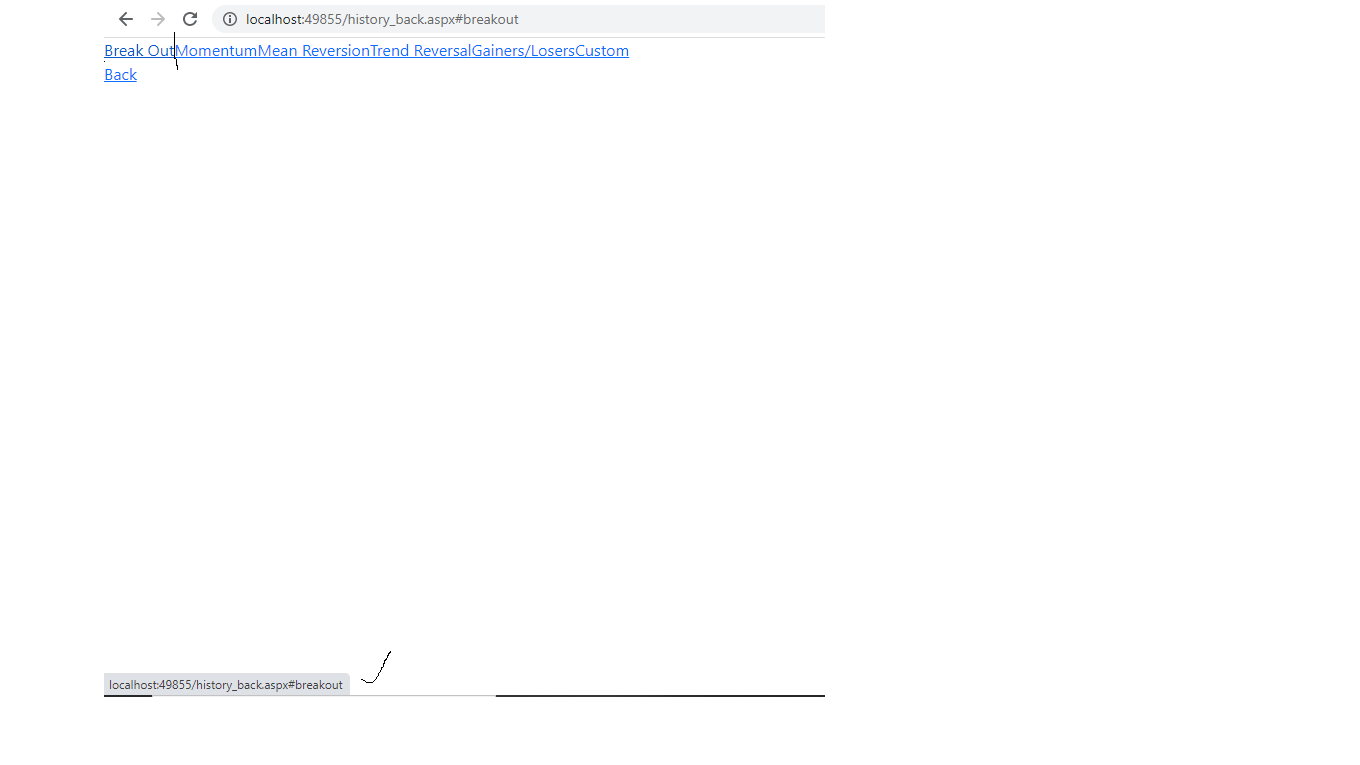If you provide any better example links that would be best to me to learn the concept
My example works as expected and triggers JavaScript history. I'm not sure why your code does not function as expected.
Keep in mind, the community has not idea what you know or what you need to learn. With that being said it seems you need to learn Web Forms fundamentals, JavaScript events basics, and perhaps HTML fundamentals. Essentially general web development.
The following example show both methods I recommended in my first post. The example starts by opening WebForm1. The link makes an HTTP GET request WebForm2. This creates browser history and a sends the Referer header in the HTTP request. Webform2 has two links. One link uses standard Web Forms server controls to populate a HyperLink using the [Referer] URL. The second link uses JavaScript to invoke the browser's back() feature.
WebForm1.aspx
<!DOCTYPE html>
<html xmlns="http://www.w3.org/1999/xhtml">
<head runat="server">
<title></title>
</head>
<body>
<form id="form1" runat="server">
<asp:HyperLink ID="HyperLink1" runat="server" NavigateUrl="~/Javascript/WebForm2.aspx">Goto WebPage 2</asp:HyperLink>
</form>
</body>
</html>
WebForm2.aspx
<form id="form1" runat="server">
<div>
<asp:HyperLink ID="HyperLink1" runat="server">Go back using the referrer</asp:HyperLink><br />
<a href="#" onclick="tradercommonbackclick(); return false;">Go back using history</a>
</div>
</form>
<script>
function tradercommonbackclick() {
window.history.back();
}
</script>
WebForm2.aspx.cs
protected void Page_Load(object sender, EventArgs e)
{
this.HyperLink1.NavigateUrl = Request.UrlReferrer.AbsoluteUri;
}
If you are still having trouble with your code, post all the relevant code so the community is not forced to guess how the code is designed.
I strongly recommend that you use standard Web Forms controls and tools when selecting Web Forms as the development platform. If you want to use jQuery/JavaScript libraries then learn MVC.

